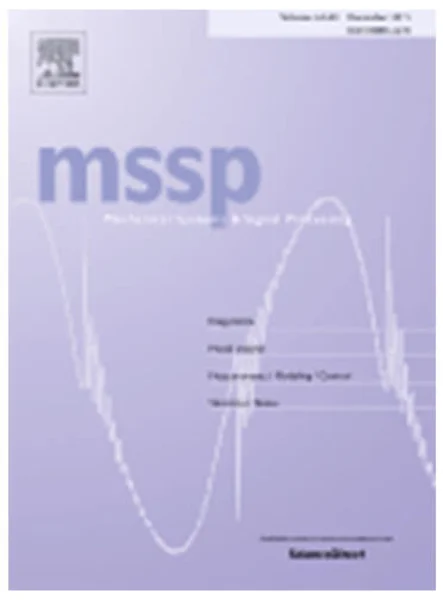-
condition-based spares ordering for critical components
جزئیات بیشتر مقاله- تاریخ ارائه: 1390/01/01
- تاریخ انتشار در تی پی بین: 1390/01/01
- تعداد بازدید: 372
- تعداد پرسش و پاسخ ها: 0
- شماره تماس دبیرخانه رویداد: -
it is widely accepted that one of the potential benefits of condition-based maintenance (cbm) is the expected decrease in inventory as the procurement of parts can be triggered by the identification of a potential failure. for this to be possible, the interval between the identification of the potential failure and the occurrence of a functional failure (p-f interval) needs to be longer than the lead time for the required part. in this paper we present a model directed to the determination of the ordering decision for a spare part when the component in operation is subject to a condition monitoring program. in our model the ordering decision depends on the remaining useful life (rul) estimation obtained through (i) the assessment of component age and (ii) condition indicators (covariates) that are indicative of the state of health of the component, at every inspection time. we consider a random lead time for spares, and a single-component, single-spare configuration that is not uncommon for very expensive and highly critical equipment.
مقالات جدیدترین رویدادها
-
استفاده از تحلیل اهمیت-عملکرد در ارائه الگوی مدیریت خلاقیت سازمانی و ارائه راهکار جهت بهبود
-
بررسی تاثیر ارزش وجوه نقد مازاد بر ساختار سرمایه شرکت های پذیرفته شده در بورس اوراق بهادار تهران
-
بررسی تأثیر سطح افشای ریسک بر قرارداد بدهی شرکت های پذیرفته شده در بورس اوراق بهادار تهران
-
بررسی تأثیر رتبه بندی اعتباری مبتنی بر مدل امتیاز بازار نوظهور بر نقد شوندگی سهام با تأکید بر خصوصی سازی شرکت ها
-
تأثیر آمیخته بازاریابی پوشاک ایرانی بر تصویر ذهنی مشتری پوشاک ایرانی (هاکوپیان)
-
مقایسه اثر آنتی میکروبیال گوتاپرکای حاوی کلسیم هیدروکساید و خمیر کلسیم هیدروکساید
-
کاربرد تبدیل موجک پیوسته در تشخیص ناهنجاری محتوای کل چگالی الکترون قائم زلزله ی اهر، ایران، 11 آگوست 2012
-
بررسی تأثیر گودبرداری بر میزان خسارت وارده به سازه های بالادست
-
استفاده از اراضی بستر رودخانه ها و منابع آبی (بر اساس قوانین و مقررات)
-
ارزیابی عملکرد شهرهای جدید ایران در جذب سرریز جمعیت مادرشهرها (مطالعه موردی: شهر جدید مجلسی)
مقالات جدیدترین ژورنال ها
-
مدیریت و بررسی افسردگی دانش آموزان دختر مقطع متوسطه دوم در دروان کرونا در شهرستان دزفول
-
مدیریت و بررسی خرد سیاسی در اندیشه ی فردوسی در ادب ایران
-
واکاوی و مدیریت توصیفی قلمدان(جاکلیدی)ضریح در موزه آستان قدس رضوی
-
بررسی تاثیر خلاقیت، دانش و انگیزه کارکنان بر پیشنهادات نوآورانه کارکنان ( مورد مطالعه: هتل های 3 و 4 ستاره استان کرمان)
-
بررسی تاثیر کیفیت سیستم های اطلاعاتی بر تصمیم گیری موفق در شرکتهای تولیدی استان اصفهان (مورد مطالعه: مدیران شرکتهای تولیدی استان اصفهان)
-
اصول طراحی زمین بازی کودکان براساس تصورات کودکانه نمونه موردی : پارک های منطقه یک شهر زنجان
-
چگونگی و حد و حصر رابطه دختر و پسر قبل از ازدواج از نظر آیات و روایات
-
جایگاه فقهی و حقوقی معاملات معارض در حقوق موضوعی ایران
-
طراحی چارچوبی برای مدیریت منابع انسانی کارآفرین محور در بخش دولتی
-
بررسی رابطه بین مدیریت سود مبتنی بر فروش دارائی های بلندمدت و وجوه نقد حاصل از عملیات در شرکت های پذیرفته شده در بورس اوراق بهادار تهران




سوال خود را در مورد این مقاله مطرح نمایید :